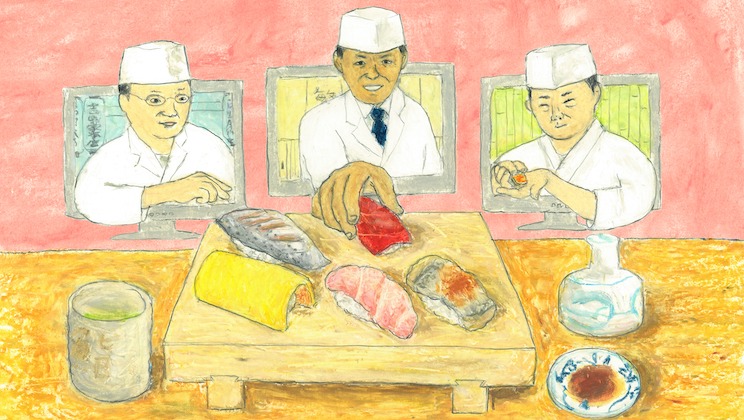Designing the Future from the Perspective of Urban Planning x Store Planning What is the prestigious sushi restaurant, Shigenozushi’s future vision of “a town that nurtures people and culture”?
Designing the Future from the Perspective of Urban Planning x Store Planning What is the prestigious sushi restaurant, Shigenozushi’s future vision of “a town that nurtures people and culture”?

Did you know that Tokyo’s riverside fish market, which called attention last year for moving to the Toyosu Fish Market, used to be next to the foot of the Nihonbashi bridge? The owner of the prestigious sushi restaurant, “Shigenozushi,” Mr. Ichiro Sakuma is not only an owner, but also the creative third head of the restaurant who is also actively involved in the urban planning of Nihonbashi. We asked him about a wide range of topics from the history of the prestigious sushi restaurant to his future vision.
A Tradition from His Predecessor: An Uncompromising and Relentless Devotion to “Facing People”
―First, please tell us about the history of Shigenozushi.
We originally had a fish store called “Takaneya” at the Nihonbashi riverside fish market. We opened as a sushi restaurant in 1949 after the market moved to Tsukiji. We have been providing fresh fish for court rituals of the Imperial Household Agency from our time as a fish store to the present day. We still deliver them every morning before we open the store.
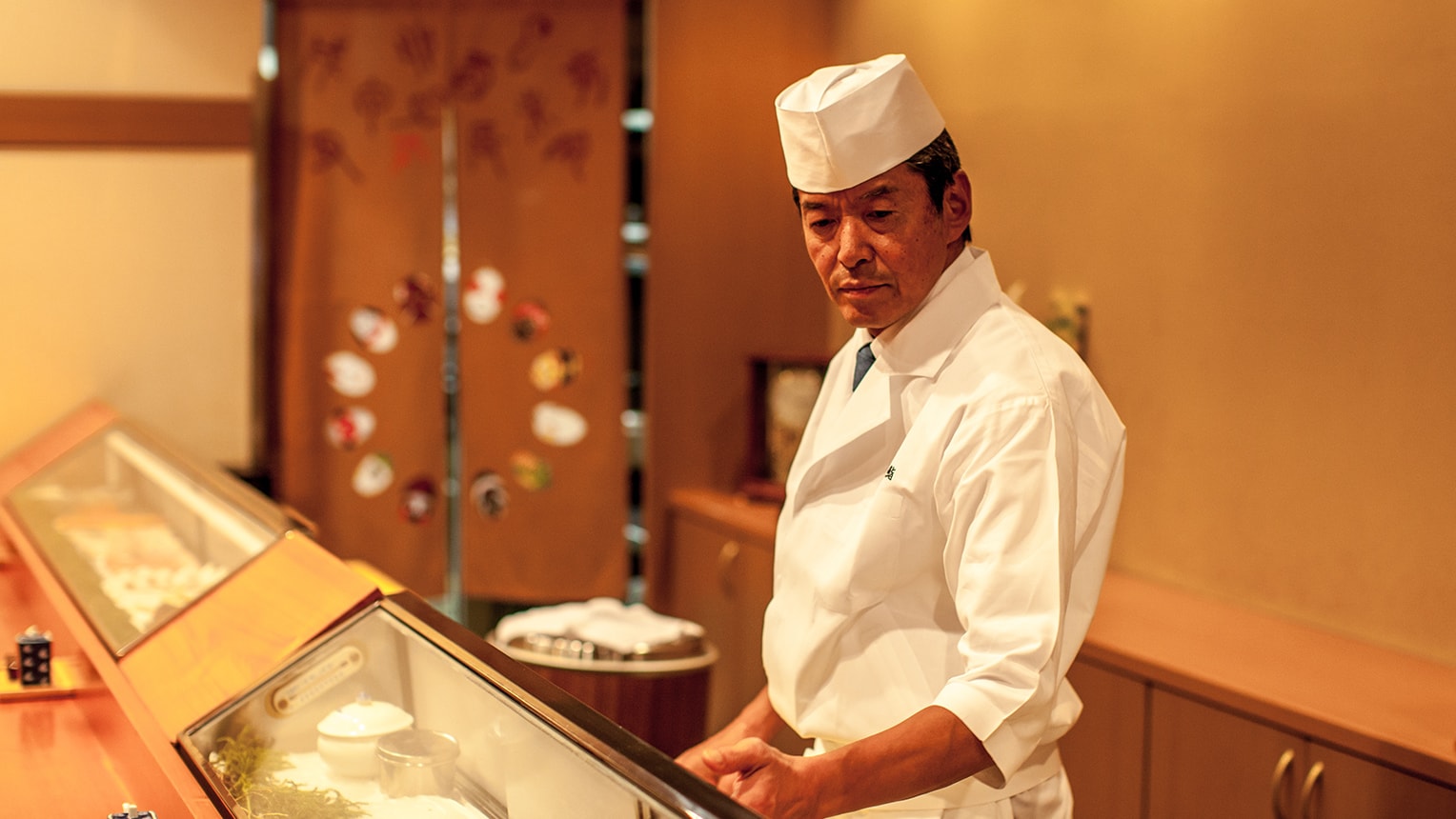
―For you to be allowed into the Imperial Household Agency, that is a world not many would know about.
It’s an extremely regal place. I always try to be aware to be properly dressed and brace myself. We have always taken our job to deliver fish seriously. However, some things have changed. The first owner delivered on a bike, the second on a motorcycle, and I delivery in my Audi. That changes with the times [laughs].
―What are some of the traditions that have been passed down from your predecessors?
There is an important doctrine from the previous owner. The first is to “face each customer.” For example, to make smaller sushi for older people or determining whether the customers at the counter wants to talk or not. I do my best to accommodate the customers.
The other is in “creating a comfortable atmosphere.” The customers not only chose us out of all the other sushi restaurants but are also giving us their time to stay and eat until they leave. It goes without saying that we must serve great food, but we must also provide a comfortable atmosphere.
What makes me more happier than anything is to have everyone, whether they are frequent customers or first-timers say that “It was delicious and enjoyable” before they leave.
Technology at Sushi Restaurants: Having Fun Catering to Changes in a Changing Town
―Mr. Sakuma, you great up in Nihonbashi. What are some changes that you have seen in Nihonbashi, being in this town for a long time?
It has changed greatly. It used to be a financial district, so everything closed at 3 p.m., and after that it was quiet. Nihonbashi back then used to be a place where people came for specific stores, whether it be Shigenozushi or Mitsukoshi.
During the bubble economy, most of my customers came for business purposes and they had extravagant meals to entertain their guests. Back then our store was near the Edobashi Bridge, and I remember stock traders crossing the bridge from the Kayabacho area to have lunch at our store.
Nihonbashi took a huge hit when the bubble burst because it was a financial district. Around the same time, Shigenozushi moved to our current location from Edobashi Bridge, and the town changed.
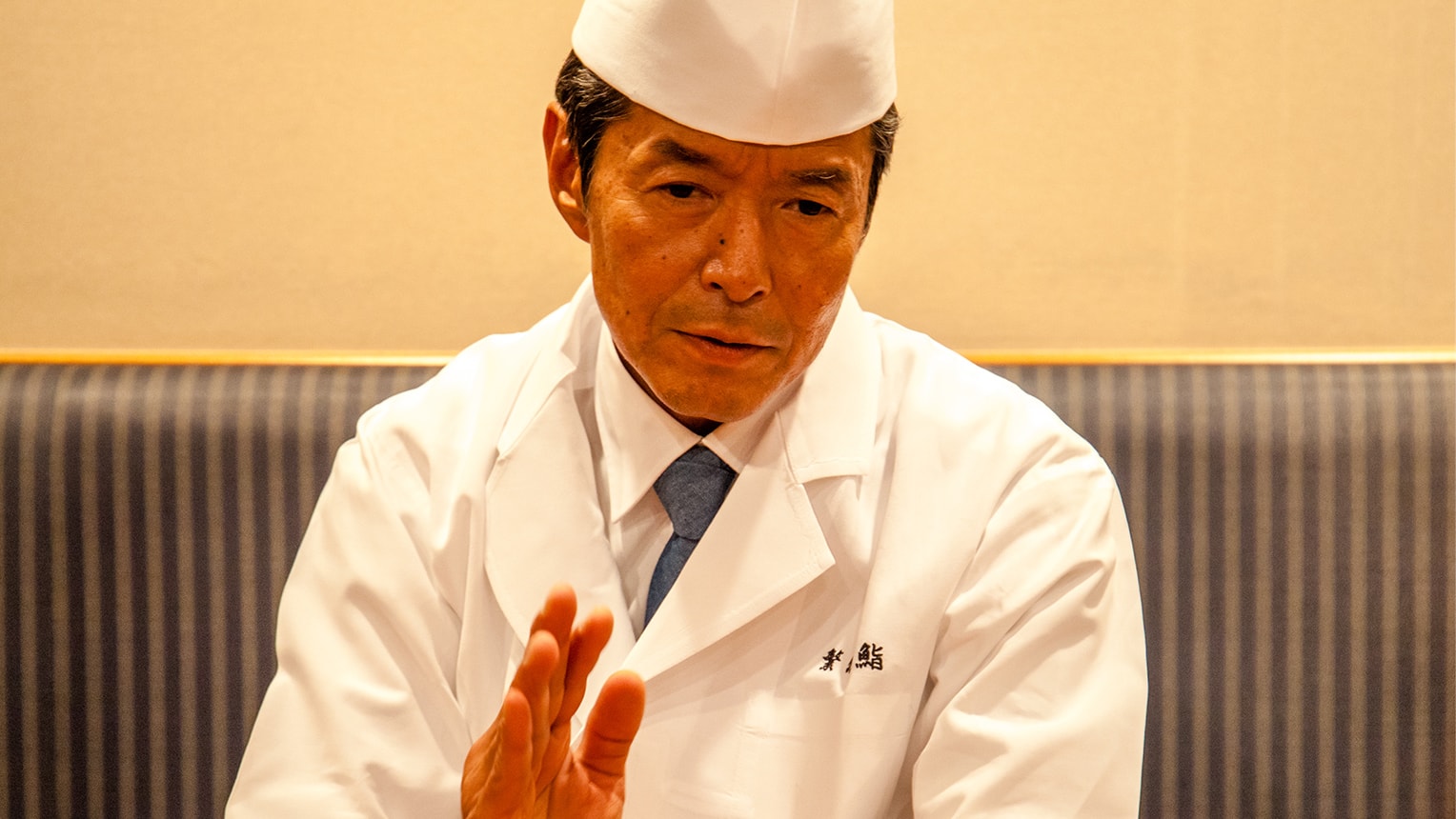
―What brought the bustle back to what the current town of Nihonbashi?
The flow of people changed around 2010 when COREDO Muromachi opened. After that, a cinema was built, and the town changed to a place where people spent time. It’s starting to turn into a town where people can enjoy in many ways—for example, walking around, watching a movie, and shopping. I hope that more people will spend more time here. I want them to stay for the day and enjoy two meals.
It’s also a historical town, so I recommend that people have fun thinking back to how it used to look and remembering the names of the streets. A big difference between Nihonbashi and other towns is that it has deep-rooted traditions and the current townscape is an extention of that.
―Have the customers changed recently?
There are more foreign customers. Most of them are tourists staying at nearby hotels or engineers working at pharmaceutical companies in the area, and many of them come to our restaurant, too. Foreign customers especially like to sit at the counter. When we talk and can’t understand each other, I use a small translation machine. I have it hidden in my pocket at all times. It’s a bit embarrassing to take it out of nowhere, so I sometimes go in the back to check on the translation machine and then come out [laugh]. I can enjoy the conversations, and a chef from a three-star restaurant also uploaded a photo on Instagram, which really helps with communication. These days, even sushi restaurants uses technology.
Connecting with the People: Giving Birth to Perspectives that Change the Entire Town
―Are there any challenges that you’re taking on at the restaurant or as an individual?
Above all else, it has to be urban planning. I am putting my all into it because this is something a single store cannot do. The entire area has to improve, or else people would leave. Nowadays, people no longer go to places for a single purpose like they used to. It’s an era where people choose the town they go from out of all sorts of options. A store can’t flourish unless the town isn’t attractive. An example of my efforts is that I am a part of making rules for the town’s landscape design. When a new store opens, I do my best to set up a relaxing environment for meetings to talk about whether their design can flourish in the Nihonbashi landscape.
By having discussion before the completion of a store, it’s beneficial for both the town and the store. We communicate and proceed based on whether it feels good when you walk through the town. It’s finally starting to take shape after working on it for about three years.
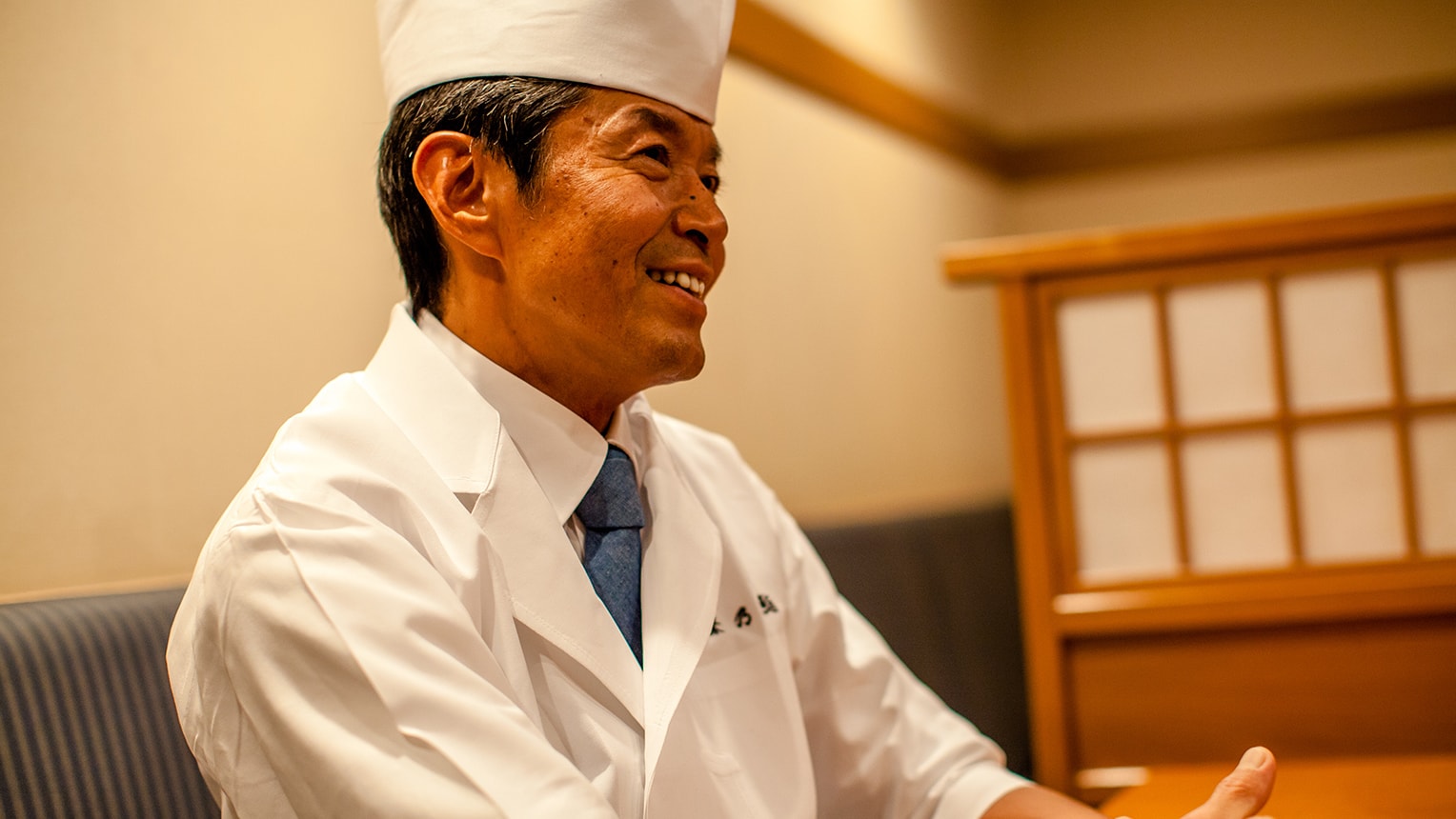
―A sushi restaurant is operating with urban planning in its mindset. That is very unique.
When there are so many sushi restaurants, people tell me that “it must be hard with all the competition.” However, that’s not the case. It gives customers the joy of being able to choose, which in turn vitalizes the town. People in Nihonbashi have a strong bond and are intent on building up this town together. I had always been connected to the people of my generation since I was little. However, our bond is stronger now through working and building programs together. I feel that it’s become a habit of seeing things from the town’s perspective.
―Are there anything that you value in your work regarding the town?
I’d say “elegance.” I welcome the new, but I don’t accept everything. I make decisions on the basis of elegance. I would like to value beauty, empathy, and things that are intangible. You can always tweak things that are tangible. However, if what’s in your heart gets lost, things can go downhill very quickly.
The Next Keyword are Theater?: Becoming a Town Where Culture & People Bloom
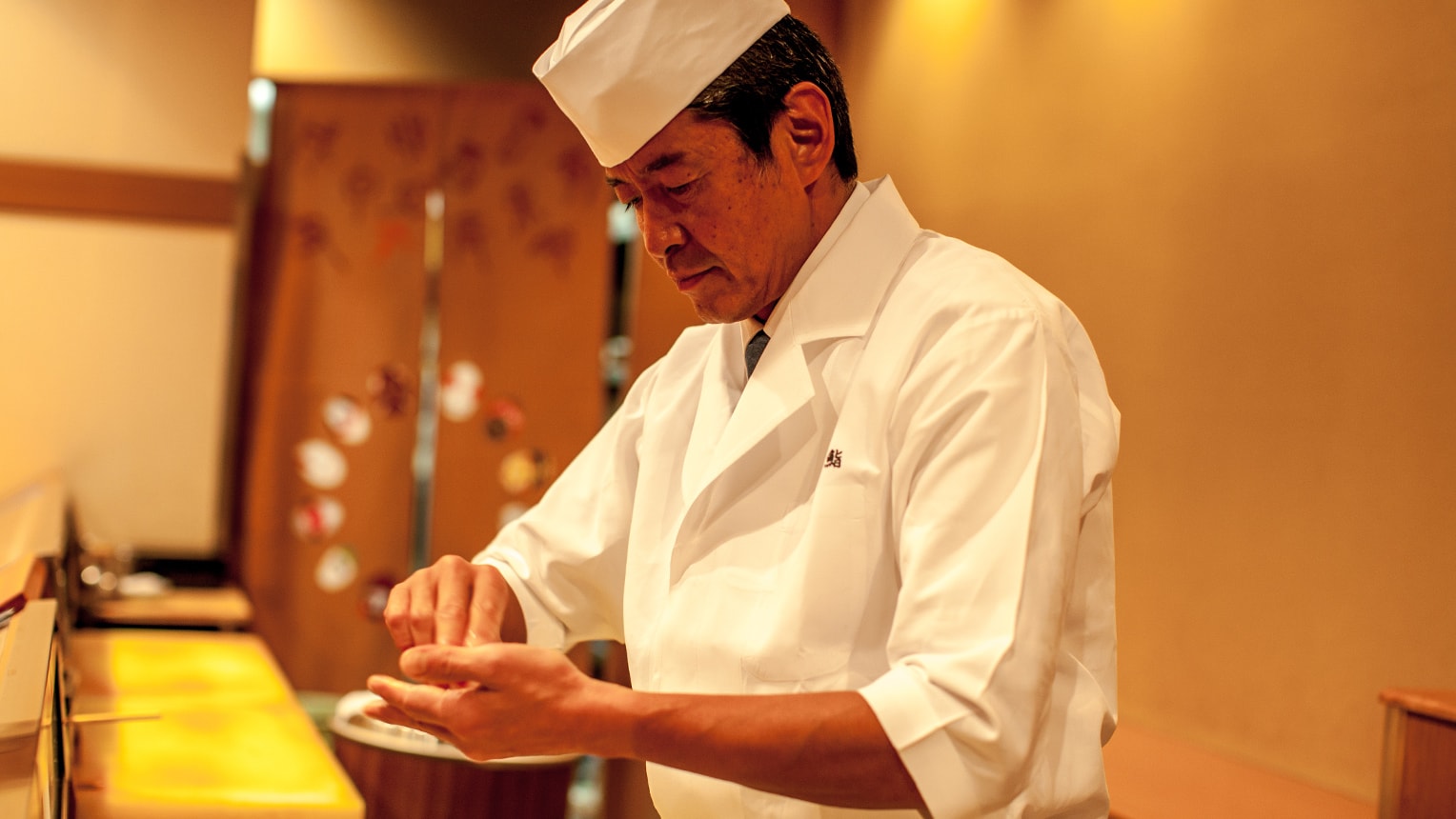
―Do you have anything you want to do in Nihonbashi in the future?
What’s lacking in Nihonbashi now are cultural facilities like theaters. A small theater for productions where people can gather, and where performers and audiences could interact. It’s important to inherit traditions, but I also want to build a culture that can be passed down for fifty, or hundreds of years from now. For example, if there are upcoming stage actors, it would be great if they can connect with creators in this place or visit prestigious stores, creating a flow where the town nurtures young actors. I would be proud if they would one day become famous and go on TV saying that “I am from Nihonbashi.”
―”A town that nurtures the people,” that is a saying that goes well with Nihonbashi’s image.
I agree. If those kinds of people can come, the town might have a different sort of attraction. I just want to build a new culture.
It’s easy to bring celebrities to the store, but nurturing budding talent is not something you can do easily. However, this area has the Meijiza theater and a culture that supports the arts because it emotionally affects people. The people of Nihonbashi are also passionate and warm-hearted, so I feel like we can create an environment where we can support young artists with our “classy” spirit. We want to tell them, “Don’t worry about the bill! Have some food!” This is not something that franchise stores can do.
A Challenge: Incorporating New People & Perspectives into Tradition
―The number of creators and start-ups in Nihonbashi is increasing. What’s your view on that?
I think the newcomers to Nihonbashi are in the same position as us who have been here since the old times. I believe that they chose Nihonbashi because they like the town and want to make it better. That is why I want to actively involve myself and work together to come up with ideas.
Even if we tried changing the town on our own, we lack innovation. That is why I am interested in efforts like the recent “Mirai-no-Noren (Noren of Tomorrow) Exhibition” which brings in new perspectives to tradition. It would be great if I could discuss the restaurant and the town on what we could change to make it even better. It would be even greater if we could cooperate and split the roles and responsibilities. For example, they might give us new ideas, and we take charge of the administration and negotiations to actualize their idea. Rather than taking time to do things, we want to start with what we can do right now. I believe protecting tradition while evolving is what makes a town more attractive.
*A project where young creators use their free-form imaginations and the latest technologies to create the “Mirai-no-Noren (traditional storefront curtains)” for the famous stores of Nihonbashi.
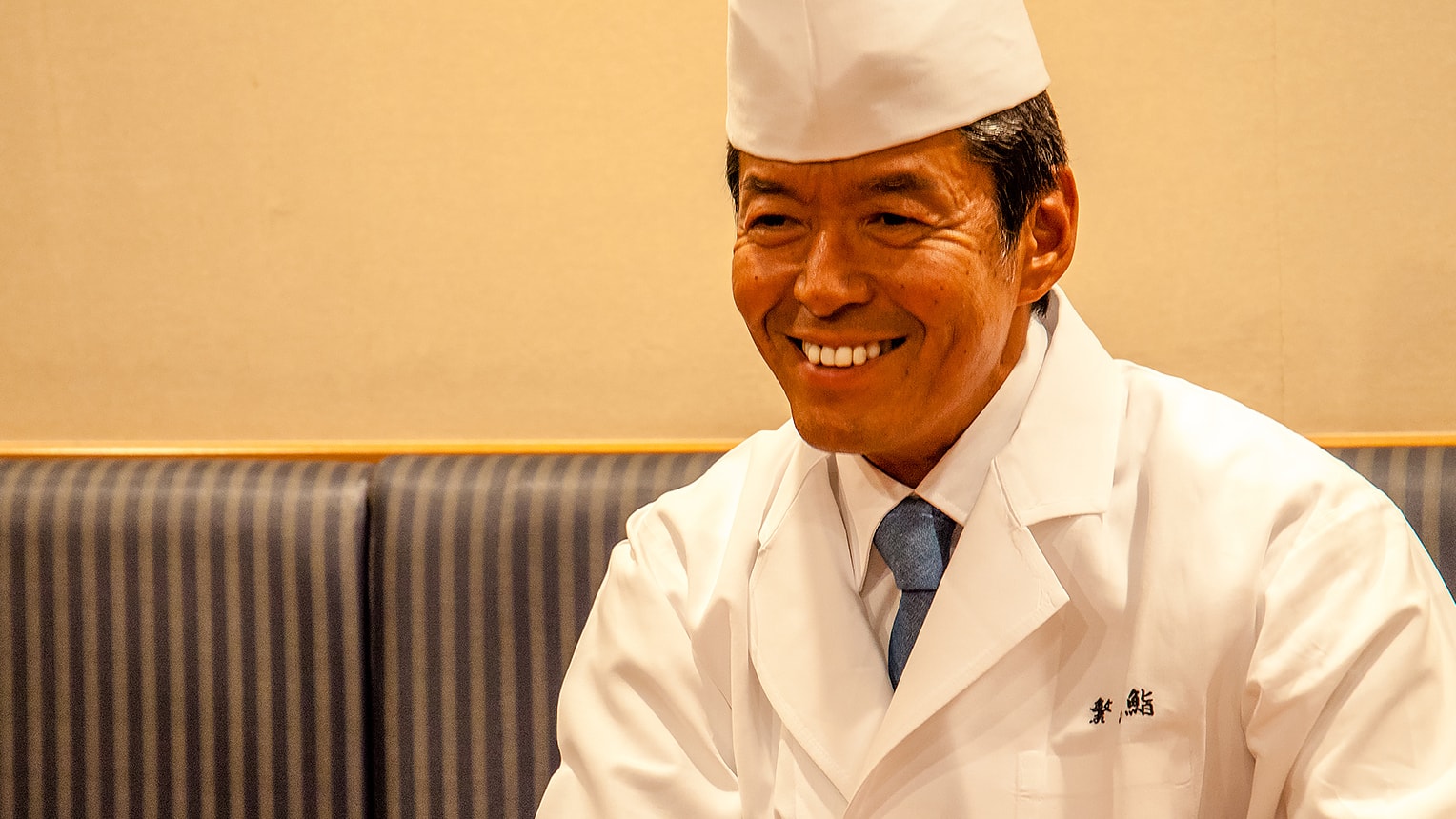
―Does the entire town have that kind of a welcoming attitude?
You might not expect it, but the town is surprisingly open to new things, so there are opportunities for things to spread immediately, because if it is good, people say would say that “I also want to do it!” I want to create original LINE stamps, but once I do it, others would get jealous and will create a commotion [laughs]. I think we are a bit different from what you’d expect most traditional and prestigious stores would act like.
―Please give a message to people who are new to the town.
Please participate in the urban planning. Even for things that may seem small, feel free to tell me, or we can really get into the specifics and details. We are here, ready to listen to anything you have to say! The community has a strong bond, so if you interact with anyone in the community, your network will expand quickly. And of course, please come to Shigenozushi! I want to hear your opinions on our restaurant, the town, or anything that you have to say. This is a time when we can’t just settle for being “mediocre.”
Mr. Sakuma’s Restaurant Recommendations
Out of simple curiosity, we asked for his recommendations. “Where does the third owner of a prestigious restaurant eat and drink?”
1. Charcoal-Grilled Barbeque: Akagi
My local friends’ favorite restaurant in Kayabacho.
We gather here often to drink.
2. New Torigin
Cheap and delicious, it is an old-timey, cozy little restaurant.
3. RIBAYON ATTACK (OVOL Nihonbashi Bldg. Store)
It’s a new restaurant that’s been getting a lot of attention. Its genre is new to Nihonbashi and is my recent favorite.
Interview and Article: Minako Ushida / Photographer: Tatsuya Sato
Shigenozushi
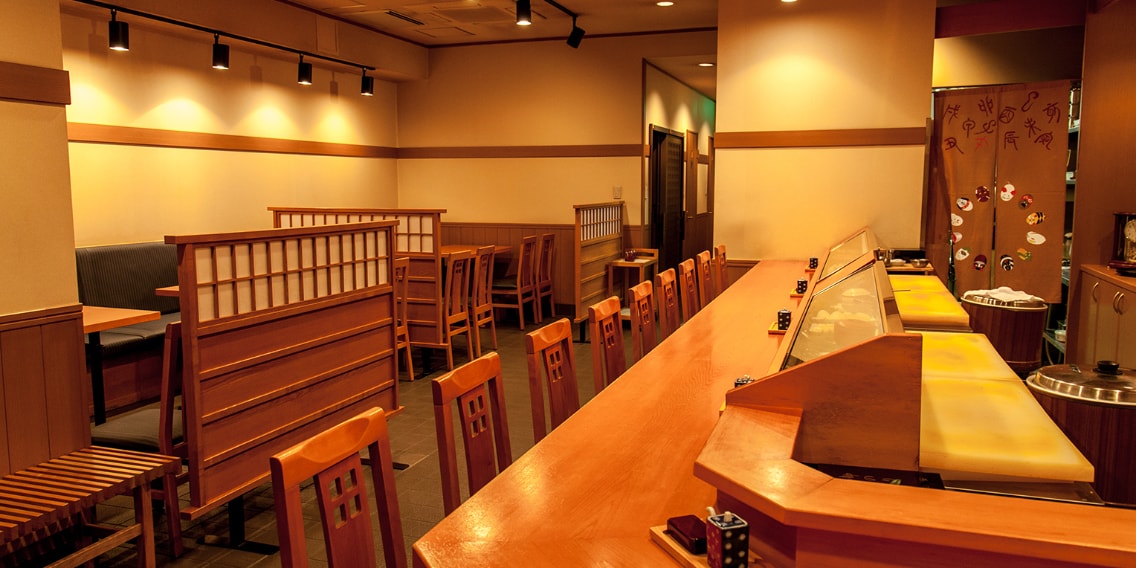
Address: Takaneya Building, 1-4-13, Nihonbashi-Honcho, Chuo-ku, Tokyo, 103-0023
Phone: (+81) (0) 3-3241-3586
Hours: [Lunch] 11:00 AM - 1:30 PM [Dinner] 5:00 PM - 9:00 PM
Closed: Saturdays, Sundays, and national holidays


